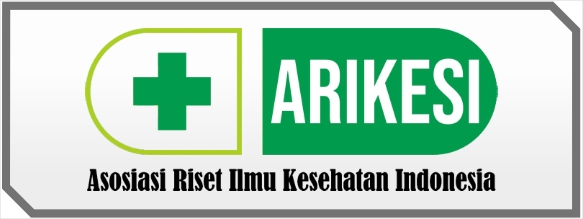Unlocking the Healing Potential: Exploring Risk and Safety in Manual Manipulation Including Tui Na Practices
DOI:
https://doi.org/10.61978/medicor.v2i3.361Keywords:
Safety, Manual Manipulative, Risk Manual Manipulation, Tui NaAbstract
Manual manipulative practices (MMPs), such as chiropractic spinal manipulation, osteopathic treatment, and Tui Na massage, are famous for improving musculoskeletal function but carry risks ranging from minor to severe side effects. Chiropractic therapy generally has minimal adverse effects, while Tui Na is less commonly used. A literature review on patient safety in MMPs involves evaluating studies, synthesizing findings, and identifying themes. While spinal manipulation can be beneficial, it may cause side effects like muscle soreness and headache and, in rare cases, severe complications like stroke. Reporting of adverse events has improved but still does not meet guidelines. Strategies to minimize risks include informed consent, thorough patient history, and adherence to clinical guidelines. These practices can enhance patient care and public health when applied with safety considerations.
References
Chu, E. C., Trager, R. J., Lee, L. Y., & Niazi, I. K. (2023). A retrospective analysis of the incidence of severe adverse events among recipients of chiropractic spinal manipulative therapy. Scientific Reports, 13(1), 1254. https://doi.org/10.1038/s41598-023-28520-4 DOI: https://doi.org/10.1038/s41598-023-28520-4
Dolbec, A., Doucet, C., Pohlman, K. A., Sobczak, S., & Pagé, I. (2024). Assessing adverse events associated with chiropractic care in the preschool pediatric population: a feasibility study. Chiropractic & Manual Therapies, 32(1), 9. https://doi.org/10.1186/s12998-024-00529-0 DOI: https://doi.org/10.1186/s12998-024-00529-0
Finch, R. M., & Swait, G. (2017). Cervical artery dissection following chiropractic cervical spinal manipulation: A literature review. Journal of Manipulative and Physiological Therapeutics, 40(3), 227–232.
Fong, H., Lee, C., & Chong, M. (2023). Risk mitigation strategies in manual therapies: The role of screening and evidence-based practice. BMC Complementary Medicine and Therapies, 23(1), 56–64.
Gorrell, L. M., Brown, B. T., Engel, R., & Lystad, R. P. (2023). Reporting of adverse events associated with spinal manipulation in randomized clinical trials: an updated systematic review. BMJ Open, 13(5), 67526. https://doi.org/10.1136/bmjopen-2022-067526 DOI: https://doi.org/10.1136/bmjopen-2022-067526
Gunawan, L. (2023a). The role of Tui Na massage in managing pediatric feeding difficulties: A clinical overview. Pediatric Therapy Journal, 15(2), 98–105.
Gunawan, L. (2023b). Tui-na Therapy for Shoulder Pain in a Young Great (D. et al..; Vol. 18, Issue 1, pp. 69–75). https://doi.org/10.59565/DPFB2593 DOI: https://doi.org/10.59565/DPFB2593
Hensel, K. L., Goertz, C. M., & Ward, L. E. (2022). Informed consent and patient education in manual therapies: A review of best practices. Journal of Chiropractic Medicine, 21(3), 220–230.
Johnson, P. W., Thomas, S., & Delaney, M. P. (2021). Standardizing global adverse event reporting for manual manipulative therapies. International Journal of Osteopathic Medicine, 35(4), 310–321.
Katz, D., Kim, H. J., & Wang, T. (2023). Cervical spine manipulations and stroke risk: A review of the evidence. Journal of Neurological Sciences, 48(2), 25–32.
Kazemi, H., Ali, S., & Rahman, F. (2023). Longitudinal safety outcomes of manual manipulative therapies: A systematic review of adverse events. The Spine Journal, 24(1), 108–119.
Liu, J., Yang, M., & Xu, J. (2020). Safety and efficacy of Tui Na for chronic musculoskeletal pain in older adults: A retrospective analysis. BMC Complementary and Alternative Medicine, 20(1), 210–218.
Liu, K., Zhan, Y., Zhang, Y., Zhao, Y., Chai, Y., Lv, H., & Yuan, W. (2023). Efficacy and safety of Tuina (Chinese Therapeutic Massage) for knee osteoarthritis: A randomized, controlled, and crossover design clinical trial. Frontiers in Medicine, 10, 997116. https://doi.org/10.3389/fmed.2023.997116 DOI: https://doi.org/10.3389/fmed.2023.997116
Liu, S., Chen, Y., & Zhang, R. (2022). Cervical manipulations and the risk of vertebral artery dissection: A comprehensive review. Journal of Manipulative and Physiological Therapeutics, 45(1), 33–40.
Marinova, D., Angelcheva, M., Marinov, T., & Ignatov, I. (2019). Influence of Tuina Therapy on Pain as Regards Quality of Life Among Patients Suffering from Multiple. Sclerosi Journal of Medicine, Physiology and Biophysics, 52. https://doi.org/10.7176/JMPB DOI: https://doi.org/10.7176/JMPB
Maulana, S., Gunawan, L., & Liu, K. (2022). Safety and effectiveness of Tui Na massage in patients with musculoskeletal conditions: A review of current evidence. Journal of Traditional Chinese Medicine Research, 13(4), 211–219.
Rothwell, D. M., Bondy, S. J., & Williams, J. I. (n.d.). Chiropractic manipulation and stroke: A population-based case-control study. Stroke, 32(5), 1054–1060. DOI: https://doi.org/10.1161/01.STR.32.5.1054
Senstad, O., Leboeuf-Yde, C., & Borchgrevink, C. F. (n.d.). Side effects of chiropractic spinal manipulation: Types, frequency, discomfort, and course. Scandinavian Journal of Primary Health Care, 15(1), 50–53. DOI: https://doi.org/10.3109/02813439608997068
Vohra, S., Johnston, B. C., Cramer, K., & Humphreys, K. (2007). Adverse events associated with pediatric spinal manipulation: A systematic review. Pediatrics, 119(1), 275– 279. DOI: https://doi.org/10.1542/peds.2006-1392
Whedon, J. M., Mackenzie, T. A., Phillips, R. B., & Lurie, J. D. (2022). Risk of vertebrobasilar stroke and chiropractic care: Results of a population-based case. Spine, 47(8), 582–589.
Whedon, J. M., Toler, A. W., Goehl, J. M., & Kazal, L. A. (2022). Risk of vertebrobasilar stroke and carotid artery dissection after chiropractic care among Medicare beneficiaries. Journal of Manipulative and Physiological Therapeutics, 45(1), 1–8.
Xiao, J., He, S., & Wang, Y. (2014). Muscle strain after Tui Na therapy: A case study. Acupuncture & Tuina Therapy Journal, 13(2), 115–117.
Yan, L., Wang, D., & Chen, H. (2019). Vertebral artery dissection following cervical manipulation: A literature review on chiropractic, osteopathic, and Tui Na therapy. Journal of Manipulative and Physiological Therapeutics, 42(5), 401–408.
Zhang, X., Wei, J., & Huang, Z. (2021). Tui Na in chronic musculoskeletal pain management: Effectiveness, risks, and training implications. Traditional Chinese Medicine Journal, 32(4), 299–308.
Zou, G., Wang, G., Li, J., Wu, G., Huang, J., & Huang, S. (2017). Danger of injudicious use of tui-na therapy in ankylosing spondylitis. European Spine Journal : Official Publication of the European Spine Society, the European Spinal Deformity Society, and the European Section of the Cervical Spine Research Society, 26(Suppl 1), 178–180. https://doi.org/10.1007/s00586-017-5002-1 DOI: https://doi.org/10.1007/s00586-017-5002-1






